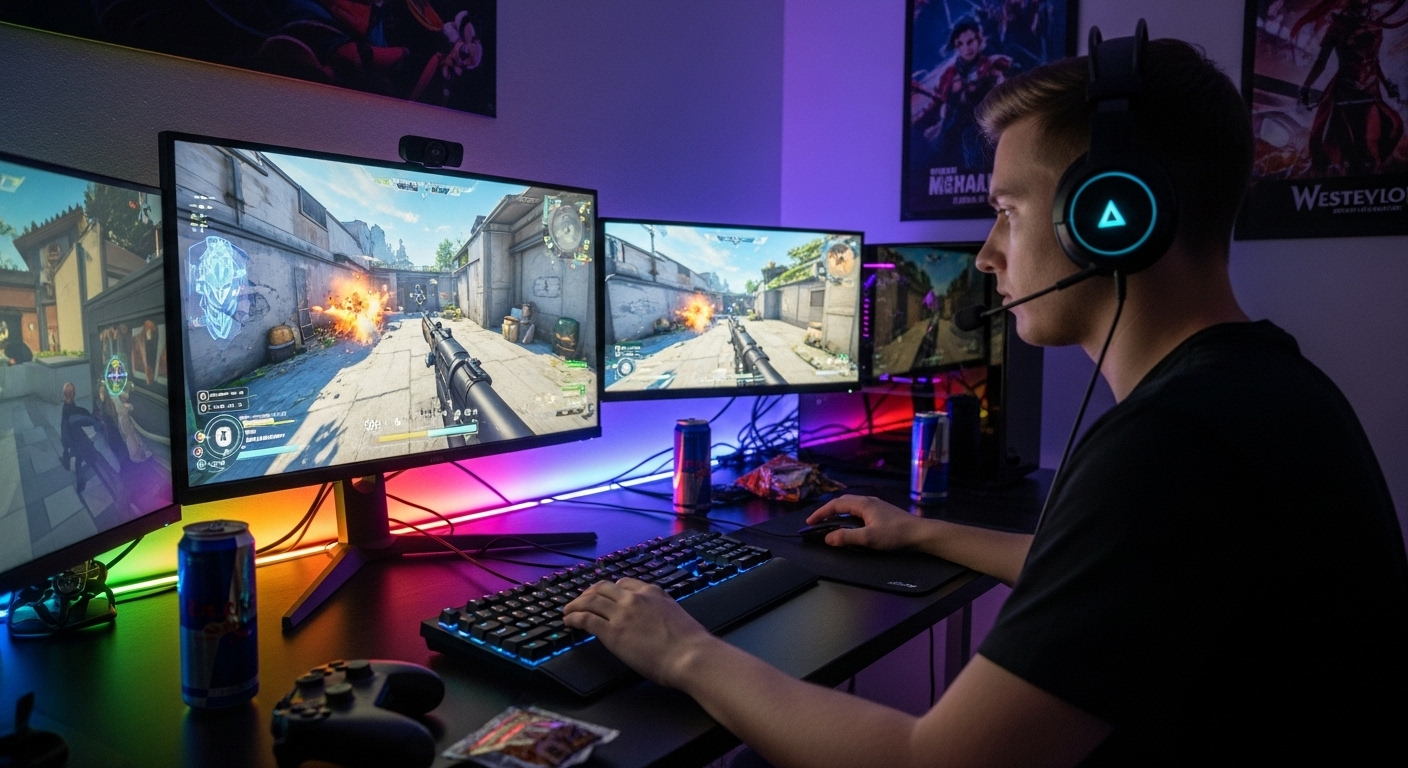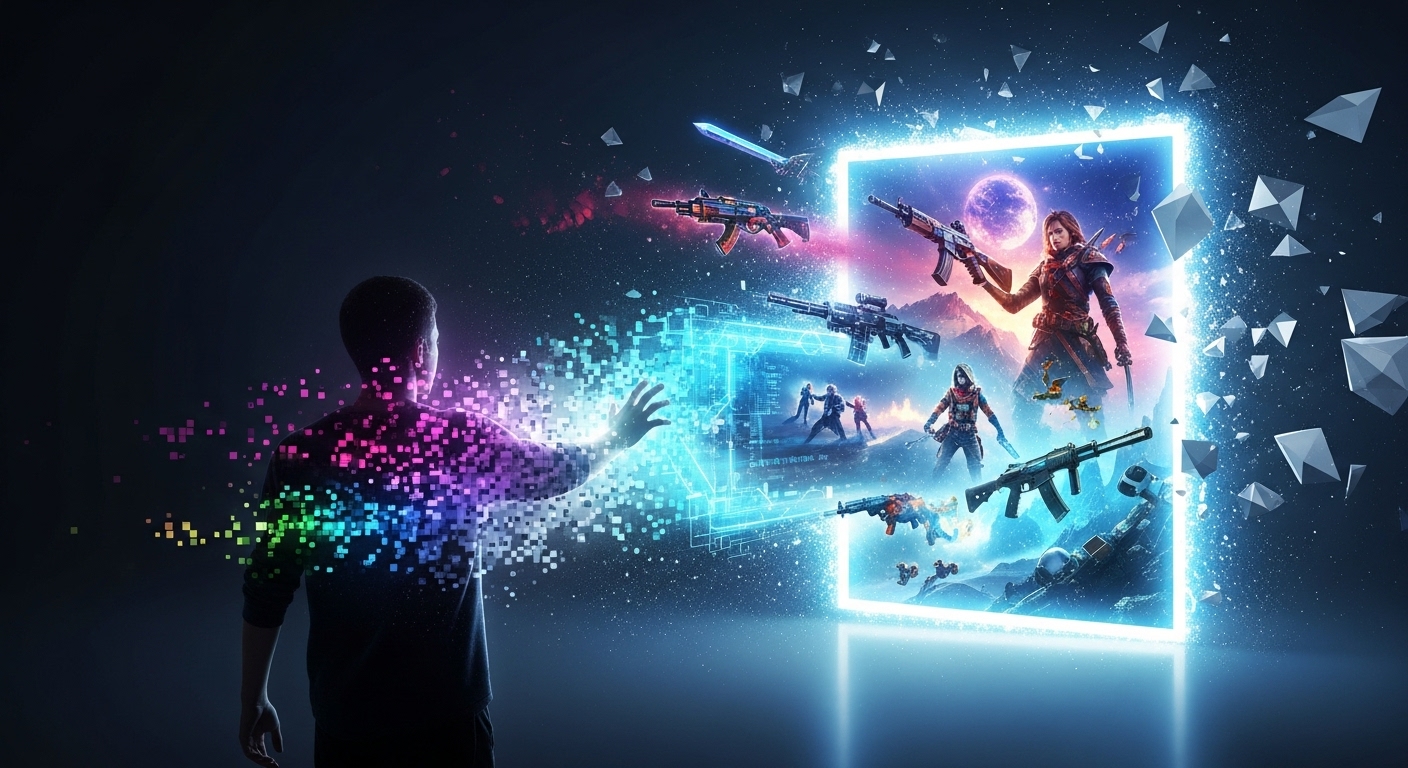Introduction: The Ever-Growing World of Gaming
Gaming has come a long way from its early days of 8-bit graphics and simple mechanics. Today, video games are not only a form of entertainment but also an immersive experience that spans genres, platforms, and cultures. From casual mobile games to high-stakes esports tournaments, gaming has firmly established itself as one of the world’s most popular pastimes. With rapid technological advancements, evolving gaming communities, and an ever-expanding global reach, the world of gaming is evolving at an unprecedented rate. This blog post will explore how gaming has changed, the innovations shaping its future, and how it continues to influence culture and society.
The Technological Revolution: How Gaming Has Transformed
Technology has been the driving force behind the evolution of gaming. Over the years, gaming systems have evolved from simple arcade machines to highly sophisticated platforms like PlayStation, Xbox, and PC gaming rigs. Graphics that once consisted of mere blocks and pixels now boast photorealistic visuals that rival Hollywood movies.
Virtual Reality (VR) and Augmented Reality (AR) are pushing the boundaries even further. VR gaming places players in fully immersive, 360-degree environments, allowing them to interact with digital worlds in ways previously unimaginable. Games like Beat Saber and Half-Life: Alyx have shown that VR can offer a truly unique gaming experience that goes beyond traditional gaming consoles. Meanwhile, AR games like Pokémon GO have integrated the real world with digital gameplay, creating a new kind of interactive experience where players can explore and compete in their own neighborhoods.
Another major development in gaming is the rise of cloud gaming, which allows players to stream games without the need for expensive hardware. Services like Google Stadia, Microsoft’s Xbox Cloud Gaming, and NVIDIA’s GeForce NOW are making it easier for gamers to access high-quality titles on almost any device, leveling the playing field for those who may not have access to high-end gaming PCs or consoles.
Esports: The New Age of Competitive Gaming
Esports has gone from a niche hobby to a global powerhouse, and it’s continuing to grow. Competitive gaming is now on par with traditional sports, with professional players, teams, and organizations competing in major tournaments that attract millions of viewers worldwide. Esports tournaments like The International (Dota 2), League of Legends World Championship, and Fortnite World Cup have turned gaming into a spectator sport, with prize pools reaching into the millions.
The appeal of esports lies not only in the level of competition but also in the communities it fosters. Fans from all over the world tune in to watch their favorite teams and players, and many gamers participate in live-streaming platforms like Twitch and YouTube to share their experiences and strategies. This has given rise to a new wave of gaming celebrities—streamers and pro gamers who have millions of followers, sponsorships, and a direct connection to their fanbase.
Esports is also providing a platform for the younger generation to pursue careers in gaming, from professional players to streamers, content creators, coaches, and analysts. Schools and universities are even offering scholarships for esports players, making it a viable career option for many. This cultural shift is changing the way we view gaming, turning it into a respected and professional career path for dedicated individuals.
The Social Impact of Gaming: Communities and Connections
Gaming has transformed into a highly social experience. What was once an isolated activity is now a communal experience where players from across the globe can connect, collaborate, and compete. Online multiplayer games, like Fortnite, Apex Legends, and Overwatch, are built around team-based dynamics that require players to work together in order to win.
The sense of community in gaming is amplified by platforms like Discord, Reddit, and social media, where players can join groups, participate in discussions, and share tips. Many gamers forge lasting friendships through these virtual interactions, and for some, gaming communities become a central part of their social lives. This shift toward social gaming has led to the rise of “gaming influencers”—individuals who engage with their audiences on a personal level while sharing gameplay experiences, tips, and commentary.
For some, gaming serves as a form of escapism, allowing them to unwind, explore new worlds, and connect with others in ways they might not be able to in real life. It’s also provided a platform for marginalized voices to share their stories and experiences. Games like Life is Strange and The Last of Us Part II have garnered praise for their inclusion of diverse characters and narratives that reflect real-world struggles.
The Evolution of Game Design: From Simple Fun to Narrative Masterpieces
In the early days of gaming, the focus was almost entirely on gameplay. The goal was to create fun, engaging experiences with simple controls and mechanics. While gameplay is still a critical part of games today, there has been a massive shift toward complex narratives, deep character development, and cinematic storytelling.
Many modern games, such as The Witcher 3, Red Dead Redemption 2, and Uncharted, are designed like interactive movies, featuring complex storylines that rival the best in film and television. These games often blend together high-quality writing, character development, and cutting-edge visuals, creating an emotional experience for players. The choices players make in these games affect the storyline, giving them a sense of ownership over the narrative and enhancing replayability.
The push for inclusivity in game design is also evident in the diverse range of characters and stories being told. Games are tackling more complex issues such as mental health, identity, and social justice, and they are making strides to reflect the diversity of the real world. This trend allows for deeper storytelling, greater emotional impact, and an increase in accessibility for players from various backgrounds.
The Future of Gaming: What’s Next?
The gaming industry is constantly evolving, and the future holds immense potential. As technology advances, so too will the way we play and experience games. One of the most exciting developments is the ongoing push for artificial intelligence (AI) to create more intelligent, responsive, and immersive gaming environments. AI could transform how non-playable characters (NPCs) interact with players, offering more dynamic and reactive worlds.
Cloud gaming also holds the promise of revolutionizing the industry. As internet speeds improve, streaming games without the need for high-end hardware will become even more accessible. This could lead to a future where gaming is truly platform-agnostic, allowing players to enjoy high-quality experiences on a variety of devices—from smartphones to smart TVs.
Additionally, the integration of more immersive technologies like VR, AR, and mixed reality (MR) will continue to change how players interact with games. These technologies have the potential to create fully immersive experiences that break the barrier between the virtual and real world, blurring the lines of what it means to “play” a game.
Conclusion: Gaming as a Cultural Mainstay
Gaming has evolved from a niche hobby into a mainstream form of entertainment that brings together millions of players around the world. With innovations in technology, evolving narratives, and thriving communities, gaming is not just about playing anymore—it’s about experiencing, connecting, and creating.
As we look toward the future, gaming will continue to push boundaries, inspiring new ways of storytelling, gameplay, and social interaction. For those who have been part of the gaming world, it’s clear that the journey is far from over—and the best is yet to come.



